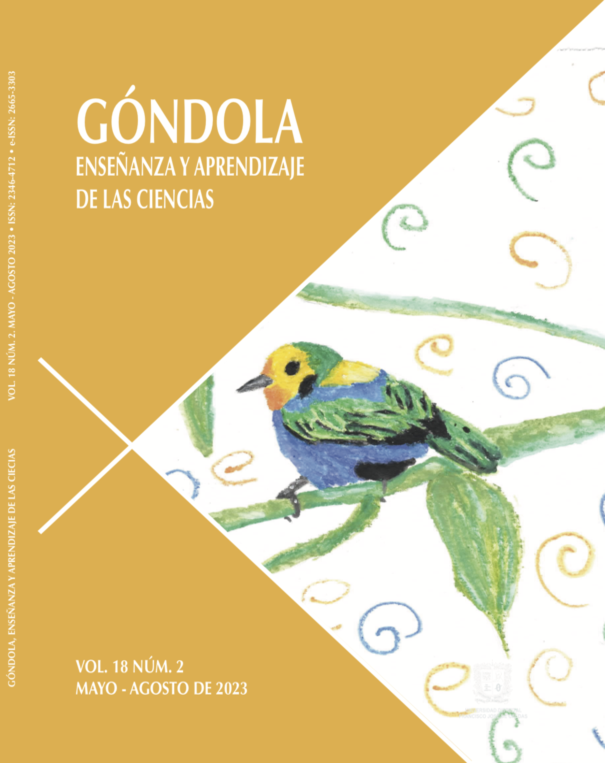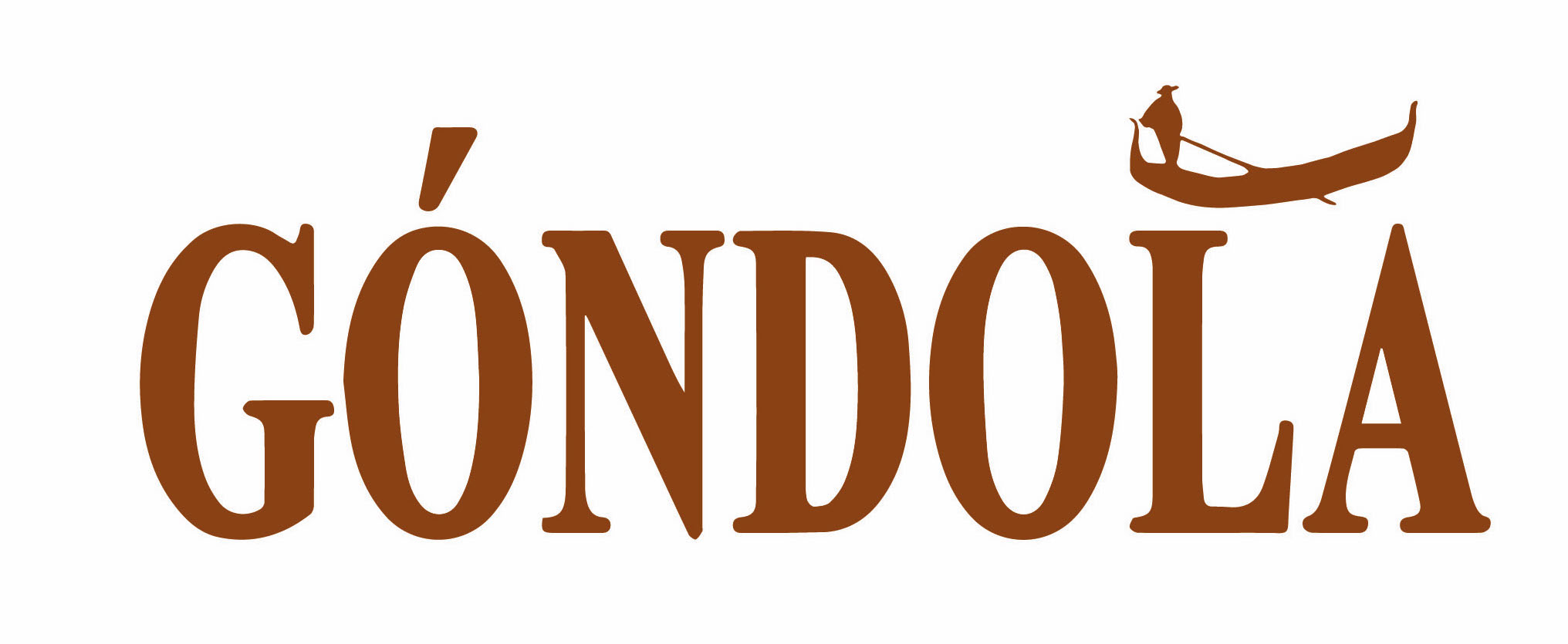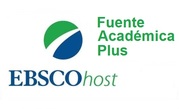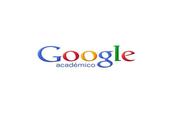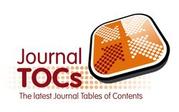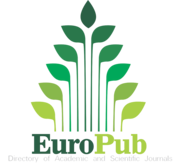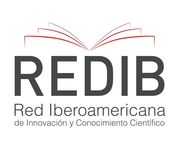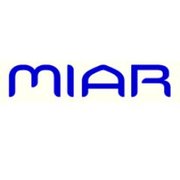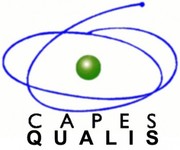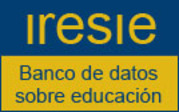DOI:
https://doi.org/10.14483/23464712.18155Publicado:
2023-07-10Conocimiento Pedagógico y Semiótico del Contenido de las Ciencias (CPSC) una Propuesta Reflexiva para Docentes
Pedagogical and Semiotic knowledge of Science Content (PSKC) A Reflective Proposal for Teachers
Conhecimentos Pedagógicos e Semióticos de Conteúdo Científico (CPSC) Uma Proposta Reflexiva para Professores
Palabras clave:
Pedagogical and Semiotic Knowledge of Content, Semiotic Knowledge of Content, Pedagogical and Semiotic Knowledge, Pedagogical Knowledge of Content (en).Palabras clave:
Conocimiento Pedagógico y Semiótico del Contenido, Conocimiento Semiótico del Contenido, Conocimiento Pedagógico y Semiótico, Conocimiento Pedagógico del Contenido (es).Palabras clave:
Conhecimento Pedagógico e Semiótico do Conteúdo, Conhecimento Semiótico do Conteúdo, Conhecimento Pedagógico e Semiótico, Conhecimento Pedagógico do Conteúdo (pt).Descargas
Resumen (es)
Las dificultades que presentan los estudiantes en la construcción del conocimiento científico escolar no sólo son consecuencias de la naturaleza abstracta y del alto componente matemático que subyace a los productos y proceso de las ciencias, sino, también, del conocimiento y uso intencional que se haga de los rasgos de carácter lingüísticos y semióticos que configuran la transacción de significados y formas de significar en el aula de ciencias. Esta situación ha generado la necesidad de conceptualizar la base del Conocimiento Pedagógico y Semiótico del Contenido de las ciencias, la cual resulta de la combinación sinérgica entre el Contenido disciplinar, la Pedagogía y la Semiótica (CPSC). Así, esta combinación produce los siguientes elementos epistémicos: Conocimiento Semiótico del Contenido; Conocimiento Pedagógico y Semiótico; y Conocimiento Pedagógico del Contenido. El primero, permitió documentar los rasgos retóricos que caracterizan el discurso científico; el segundo, estableció una serie de estrategias pedagógicas, cuya función es la de andamiar la apropiación del lenguaje de las ciencias como una herramienta de pensamiento y construcción de conocimiento; y el tercero, se focalizó en explicitar las dificultades, estrategias de enseñanza y formas de representar los contenidos.
Resumen (en)
The difficulties that students present in the construction of school scientific knowledge are not only consequences of the abstract nature and the high mathematical component that underlies the products and processes of science, but also of the knowledge and intentional use that is made of the linguistic and semiotic character traits that configure the transaction of meanings and ways of meaning in the science classroom. This situation has generated the need to conceptualize the base of Pedagogical and Semiotic Knowledge of the Content of the sciences, which results from the synergistic combination between Disciplinary Content, Pedagogy and Semiotics (CPSC). Thus, this combination produces the following epistemic elements: Semiotic Content Knowledge; Pedagogical and Semiotic Knowledge; and Pedagogical Knowledge of the Content. The first made it possible to document the rhetorical features that characterize scientific discourse; the second, established a series of pedagogical strategies, whose function is to scaffold the appropriation of the language of science as a tool for thinking and building knowledge; and the third, focused on making explicit the difficulties, teaching strategies and ways of representing the contents.
Resumen (pt)
As dificuldades apresentadas pelos estudantes na construção do conhecimento científico escolar não são apenas consequências da natureza abstracta e da elevada componente matemática subjacente aos produtos e processos da ciência, mas também do conhecimento e do uso intencional de características linguísticas e semióticas que moldam a transacção de significados e formas de significado na sala de aula de ciências. Esta situação gerou a necessidade de conceptualizar a base do Conhecimento Pedagógico e Semiótico do Conteúdo da ciência, que resulta da combinação sinérgica entre o Conteúdo disciplinar, Pedagogia e Semiótica (CPSC). Assim, esta combinação produz os seguintes elementos epistémicos: Conhecimento Semiótico do Conteúdo; Conhecimento Pedagógico e Semiótico; e Conhecimento Pedagógico do Conteúdo. A primeira permitiu documentar os traços retóricos que caracterizam o discurso científico; a segunda estabeleceu uma série de estratégias pedagógicas, cuja função é a de andaimes a apropriação da linguagem da ciência como instrumento de pensamento e construção do conhecimento; e a terceira centrou-se em tornar explícitas as dificuldades, estratégias pedagógicas e formas de representação dos conteúdos.
Referencias
Axelsson, M., y Danielsson, K. (2012). 6 Multimodality in the Science Classroom. In Literacy Practices in Transition (pp. 140-164). Multilingual Matters. https://doi.org/10.21832/9781847698414-009
Baker, L., y Saul, W. (1994). Considering science and language arts connections: A study of teacher cognition. Journal of Research in Science Teaching, 31(9), 1023-1037. https://doi.org/10.1002/tea.3660310913
Bakhtin, M. M. (1986). The problem of speech genres. In: Emerson, C. & Holquist, M. Speech Genres and Other Late Essays (pp. 60-102). University of Texas Press.
Bezemer, J., y Kress, G. (2008). Writing in multimodal texts: A social semiotic account of designs for learning. Written Communication, 25(2), 166-195. https://doi.org/10.1177/0741088307313177
Candela, B. F. (2018). El lenguaje y las múltiples representaciones externas. Estrategias de pensamiento en el aprendizaje de las ciencias. Programa Editorial Universidad del Valle.
Candela, B. F. (2019). Documentación del Conocimiento Tecnológico y Pedagógico del Contenido, de un profesor de química ejemplar durante la implementación de un objeto de aprendizaje. Góndola, Enseñanza y Aprendizaje de las Ciencias 14(1), 143-161. https://doi.org/10.14483/23464712.13131
Candela, B. F. (2020). Oralidad, lectura y escritura competencias mediadoras del aprendizaje del currículo de Química: el caso del equilibrio químico. Revista Científica, 1(37), 18-29. DOI: https://doi.org/10.14483/23448350.14839.
Candela, B. F. (2021). El diseño y desarrollo de animaciones como estrategia que ayuda a mediar la comprensión del equilibrio químico en la escuela. Edutec. Revista Electrónica De Tecnología Educativa, (75), 124-136. https://doi.org/10.21556/edutec.2021.75.1787
Candela, B. F. (2023). El lenguaje multimodal: elemento constitutivo de la educación en ciencias desde una perspectiva sociocultural. Programa Editorial UNIVALLE.
Candela, B. F., & Viafara, R. (2014). Aprendiendo a enseñar química. Programa Editorial UNIVALLE.
Danielsson, K., y Selander, S. (2016). Reading Multimodal Texts for Learning - a Model for Cultivating Multimodal Literacy. Designs for Learning, 8(1), 25-36, DOI: http://dx.doi.org/10.16993/dfl.72
Fang, Z. (2006). The language demands of science reading in middle school. International Journal of Science Education, 28(5), 491-520. https://doi.org/10.1080/09500690500339092
Fang, Z. (2014). Preparing content area teachers for disciplinary literacy instruction: The role of literacy teacher educators. Journal of Adolescent & Adult Literacy, 57(6), 444-448. https://doi.org/10.1002/jaal.269
Fang, Z. (2016). Teaching close reading with complex texts across content areas. Research in the Teaching of English, 51(1), 106.
Fang, Z., y Schleppegrell, M. J. (2010). Disciplinary literacies across content areas: Supporting secondary reading through functional language analysis. Journal of Adolescent & Adult Literacy, 53(7), 587-597. https://doi.org/10.1598/JAAL.53.7.6
Halliday, M. A. K. (1978). Language as a social semiotic. London: Edward Arnold.
Halliday, M. A. K., y Martin, J. R. (1993). Writing science: Literacy and discursive power. University of Pittsburgh Press.
Hand, B., y Choi, A. (2010). Examining the impact of student use of multiple modal representations in constructing arguments in organic chemistry laboratory classes. Research in Science Education, 40(1), 29-44. https://doi.org/10.1007/s11165-009-9155-8
Hodge, R., y Kress, G. (1988). Social semiotics. Polity Press.
Jewitt, C. (2008). Multimodality and literacy in school classrooms. Review of Research in Education, 32(1), 241-267. https://doi.org/10.3102/0091732X07310586
Kress, G. (2009). What is mode? In Jewitt, C. (ed.). The Routledge handbook of multimodal analysis (pp. 54-67). Routledge.
Kress, G., Jewitt, C., Ogborn, J., y Tsatsarelis, C. (2001). Multimodal teaching and learning. The rhetorics of the science classroom. Continuum.
Kress, G., y Selander, S. (2012). Multimodal design, learning and cultures of recognition. The Internet and Higher Education, 15(4), 265-268. https://doi.org/10.1016/j.iheduc.2011.12.003
Kress, G., y van Leeuwen, T. (2006). Reading images. The grammar of visual design. (2nd Ed.) Routledge. https://doi.org/10.4324/9780203619728
Lemke, J. L. (1990). Talking science: Language, learning, and values. Ablex Publishing Corporation.
Lemke, J. L. (1992). Intertextuality and educational research. Linguistics and Education, 4, 257-67. https://doi.org/10.1016/0898-5898(92)90003-F
Lemke, J. L. (1998). Multiplying meaning: Visual and verbal semiotics in scientific text. In J. Martin and R. Veel (Eds.), Reading science: Critical and functional perspectives on discourses of science (pp. 87-113). Routledge.
Lemke, J. L. (2004). The literacies of science. In E. W. Saul (ed.), Crossing borders in literacy and science instruction: Perspectives on theory and practice (pp. 33-47). International Reading Association/National Science Teachers Association. https://doi.org/10.1598/0872075192.2
Lucas, T. (2011). Language, schooling, and the preparation of teachers for linguistic diversity. In: Lucas, T. Teacher preparation for linguistically diverse classrooms: A resource for teacher educators (pp. 3-17). Routledge. https://doi.org/10.4324/9780203843239
Lucas, T., y Villegas, A. M. (2011). A framework for preparing linguistically responsive teachers. In Lucas, T. Teacher preparation for linguistically diverse classrooms: A resource for teacher educators (pp. 55-72). Routledge. https://doi.org/10.4324/9780203843239
Lunsford, E., Melear, C., Roth, W. M., Perkins, M., y Hickok, L. (2007). Proliferation of inscriptions and transformations among preservice teachers engaged in authentic science. Journal of Research in Science Teaching, 44(4), 538-564. https://doi.org/10.1002/tea.20160
Márquez, C., Izquierdo, M., y Espinet, M. (2006). Multimodal science teachers' discourse in modeling the water cycle. Science Education, 90(2), 202-226. https://doi.org/10.1002/sce.20100
Norris, S. P., y Phillips, L. M. (2003). How literacy in its fundamental sense is central to scientific literacy. Science Education, 87(2), 224-240. https://doi.org/10.1002/sce.10066
Peirce, C. (1931). Logic as semiotic: The theory of signs. In Buchler Justus (ed.), Philosophical writings of Peirce (1893-1910) (pp. 98-119). Dover. Reprint 1955.
Ramos, W. F. (2019). Argumentación, comunicación y falacias: una perspectiva pragma-dialéctica. Autores: Frans H. van Eemeren y Rob Grootendorst. Góndola, Enseñanza y Aprendizaje de las ciencias, 14(1), 162-164. https://doi.org/10.14483/23464712.14123
Russell, D. (1999). Activity Theory and Process Approaches: Writing (Power) in School and Society. In: Kent, T. Post-Process Theory: Beyond the Writing-Process Paradigm. Southern Illinois University Press.
Schleppegrell, M. (2004). The language of schooling: A functional linguistics perspective. Lawrence Erlbaum. https://doi.org/10.4324/9781410610317
Shulman, L. (1987). Knowledge and teaching: Foundations of the new reform. Harvard Educational Review, Stanford, 57(1), 1-22. https://doi.org/10.17763/haer.57.1.j463w79r56455411
Turkan, S., De Oliveira, L. C., Lee, O., y Phelps, G. (2014). Proposing a knowledge base for teaching academic content to English language learners: Disciplinary linguistic knowledge. Teachers College Record, 116(3), 1-30. https://doi.org/10.1177/016146811411600303
Unsworth, L. (2006). Towards a metalanguage for multiliteracies education: Describing the meaning-making resources of language-image interaction. English teaching: Practice and Critique, 5(1), 55-76.
Waldrip, B., Prain, V., y Carolan, J. (2010). Using multi-modal representations to improve learning in junior secondary science. Research in Science Education, 40(1), 65-80. https://doi.org/10.1007/s11165-009-9157-6
Cómo citar
APA
ACM
ACS
ABNT
Chicago
Harvard
IEEE
MLA
Turabian
Vancouver
Descargar cita
Licencia
Derechos de autor 2023 Autor y Góndola. Enseñanza y Aprendizaje de las Ciencias

Esta obra está bajo una licencia internacional Creative Commons Atribución-NoComercial-SinDerivadas 4.0.
Góndola, Ens Aprend Cienc. es una publicación de acceso abierto, sin cargos económicos para autores ni lectores. La publicación, consulta o descarga de los contenidos de la revista no genera costo alguno para los autores ni los lectores, toda vez que la Universidad Distrital Francisco José de Caldas asume los gastos relacionados con edición, gestión y publicación. Los pares evaluadores no reciben retribución económica alguna por su valiosa contribución. Se entiende el trabajo de todos los actores mencionados anteriormente como un aporte al fortalecimiento y crecimiento de la comunidad investigadora en el campo de la Enseñanza de las Ciencias.
A partir del 01 de diciembre de 2018 los contenidos de la revista se publican bajo los términos de la Licencia Creative Commons Atribución–No comercial–Compartir igual 4.0 Internacional (CC-BY-NC-SA 4.0), bajo la cual otros podrán distribuir, remezclar, retocar, y crear a partir de la obra de modo no comercial, siempre y cuando den crédito y licencien sus nuevas creaciones bajo las mismas condiciones.
Los titulares de los derechos de autor son los autores y la revista Góndola, Ens Aprend Cienc. Los titulares conservan todos los derechos sin restricciones, respetando los términos de la licencia en cuanto a la consulta, descarga y distribución del material.
Cuando la obra o alguno de sus elementos se halle en el dominio público según la ley vigente aplicable, esta situación no quedará afectada por la licencia.
Asimismo, incentivamos a los autores a depositar sus contribuciones en otros repositorios institucionales y temáticos, con la certeza de que la cultura y el conocimiento es un bien de todos y para todos.

